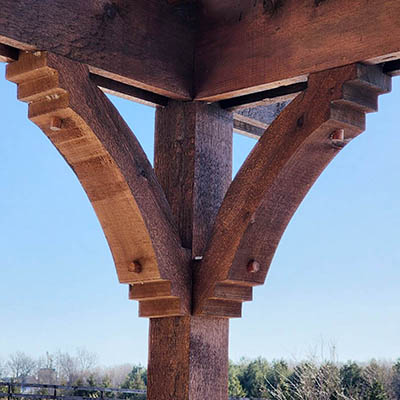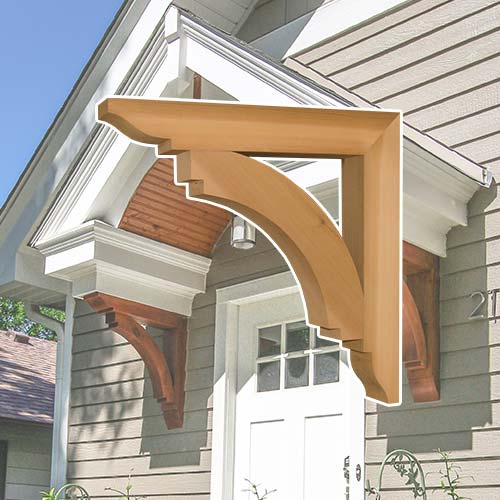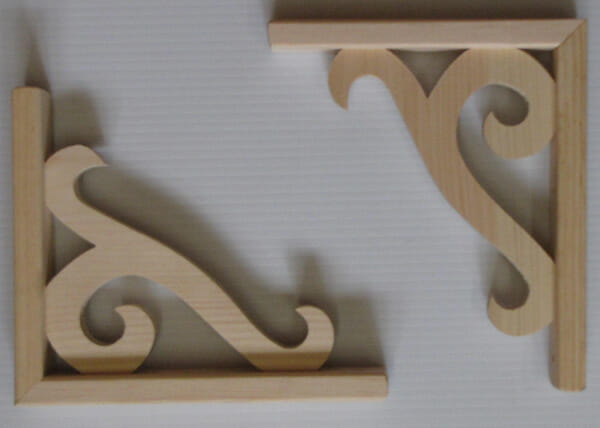Have you ever walked into a room and been captivated by its unique design elements? One feature that can dramatically elevate the aesthetics of any space is decorative wood braces. These architectural elements not only provide structural support but also add an artistic touch to your home. As someone who’s been fascinated with interior design for years, I’ve had the pleasure of experimenting with various styles of wood braces in my own home, and I’m excited to share everything I’ve learned.
What Are Decorative Wood Braces?
Decorative wood braces are structural elements used in various architectural styles that contribute both functionality and beauty. They can be found in residential homes, public buildings, and even outdoor structures, serving as a testament to craftsmanship and design thoughtfulness. Traditionally used to support beams, they now also serve as a design statement.
The Evolution of Decorative Wood Braces
Historically, braces were primarily functional, developed to support the weight of roofs and upper structures. However, over time, designers began to recognize their potential for enhancing visual interest in a space.
Key Characteristics
- Material: Typically crafted from hard woods like oak, walnut, or cedar.
- Design: Available in various styles, including rustic, modern, and classic.
- Finish: Can be stained, painted, or left natural to enhance wood grain.
Types of Decorative Wood Braces
When deciding on decorative wood braces for your home, it’s essential to understand the different types available. Each type can significantly influence your space’s overall aesthetic.

1. X-Braces
X-braces are characterized by their crisscross pattern, often seen in barns and rustic homes. They provide both strength and visual appeal.
2. L-Braces
L-braces are typically used in corners where two planes meet. They offer a clean, minimalist look perfect for modern designs.

3. Truss Braces
Commonly used in large open spaces, truss braces can create stunning visual patterns that draw the eye upward.
4. Decorative King Post Braces
This style features a central post that supports the roof’s weight while adding a unique design element. Perfect for traditional homes.

5. Collared Braces
Collar braces form a triangle and are great for providing stability while showcasing intricate designs.
Comparison Table: Types of Decorative Wood Braces
| Type | Style | Best For | Visual Impact |
|---|---|---|---|
| X-Braces | Rustic | Farmhouses | High |
| L-Braces | Modern | Contemporary Interiors | Moderate |
| Truss Braces | Architectural | Large Spaces | Very High |
| King Post Braces | Traditional | Classic Homes | High |
| Collared Braces | Artistic | Unique Designs | Moderate |

Benefits of Using Decorative Wood Braces
Incorporating decorative wood braces into your design scheme can yield numerous benefits:
- Increased Structural Integrity: These braces can provide additional support to your structures.
- Enhanced Aesthetics: Wood braces can transform a plain space into an inviting and stylish area.
- Versatility: They can be utilized in various styles, from rustic to contemporary, making them suitable for any home.
- Eco-Friendly: Using natural wood materials contributes to sustainable building practices.
Personal Experience: My Journey with Decorative Wood Braces
When I first decided to install decorative wood braces in my living room, I was a bit apprehensive. I had seen beautiful installations online, but I wasn’t sure how to execute it in my own space. After researching different styles, I chose X-braces for their rustic charm, which perfectly complemented the farmhouse aesthetic I was aiming for. I can genuinely say the transformation was remarkable; the braces added depth and character to what was once a flat wall. It quickly became a conversation piece in my home!

How to Choose the Right Decorative Wood Braces
Selecting the right type of decorative wood braces for your space involves considering several factors:
1. Style of Your Home
Consider the overall design theme. Rustic homes may benefit from X-braces, while modern designs might better suit L-braces.

2. Size and Scale
Make sure the braces are proportionate to the space you are decorating. Oversized braces can overwhelm a small room.
3. Wood Type and Finish
Different wood types and finishes can impact the overall look. Choose a finish that harmonizes with your existing decor.

4. Structural Needs
If you need functional braces, consult with a structural engineer to ensure they meet safety standards.
Installation Tips for Decorative Wood Braces
Installing decorative wood braces can be a rewarding DIY project. Here are some tips to help you get started:
1. Gather the Right Tools
- Measuring tape
- Level
- Drill
- Saw
- Stud finder
2. Measure Twice, Cut Once
Precision is key. Mark the location of the braces on the wall accurately to avoid any mistakes.
3. Attach Securely
Make sure to anchor the braces into the studs for maximum stability. Use appropriate screws and brackets.
4. Finishing Touches
Consider sanding and staining your braces to match your décor better. A good finish can enhance the beauty of the wood.
Pros and Cons of Decorative Wood Braces
Pros
- Enhances the aesthetic appeal of a space
- Provides structural support
- Available in various styles and finishes
- Relatively easy to install
Cons
- May require periodic maintenance, especially if exposed to moisture
- Quality wood can be expensive
- Installation may require advanced skills for complex designs
FAQs about Decorative Wood Braces
1. What materials are best for decorative wood braces?
The best materials include hardwoods like oak, maple, and walnut, which are both durable and aesthetically pleasing.
2. Can decorative wood braces be painted?
Yes, decorative wood braces can be painted, although many people prefer to stain them to highlight the wood grain.
3. How much do decorative wood braces cost?
The cost can vary significantly based on wood type, size, and design complexity, typically ranging from $50 to $200 per brace.
4. Are wood braces suitable for outdoor use?
Yes, but it’s crucial to treat the wood with weather-resistant finishes to prolong its lifespan in outdoor environments.
5. Can I install decorative wood braces on my own?
If you have basic DIY skills, you can install them yourself, but ensure you follow safety guidelines and use the proper tools.
Conclusion
Decorative wood braces are a stunning addition to any home, combining functionality with aesthetic appeal. Whether you’re looking to enhance a rustic farmhouse or a modern loft, there’s a style and type of wood brace that can seamlessly integrate into your design. Through my journey, I have learned that these braces do more than just support—they tell a story and create a lasting impression in your space.
So, what are you waiting for? Dive into the world of decorative wood braces and transform your home today!